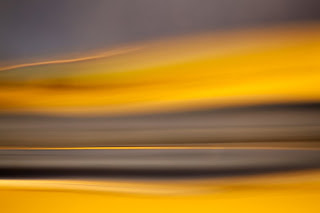
"...an aesthetic perspective is quite at home in the realm of contradictions, for its very nature allows it to transform them into a harmony of contrasts...value entails a synthesis of complexity with order, novelty with continuity, nuance with harmony, richness with stability...the cosmos is such an aesthetic reality. Both in its constituent occasions and in its overall reality the universe is a process of synthesizing and unifying its composite aspects into novel moments of present aesthetic "enjoyment." "
This is the third installment of a series of blog commentaries on my recent day-long sojourn into the subterranean wonders of
Luray Caverns, in northern Virginia (the first two parts are
here and
here, respectively). In
part II I discussed how I have resolved to deal with - though have not yet "solved" - the "problem" of extreme contrasts of light and form.
What makes the caverns unusual, from a compositional perspective, is not just that the contrasts that are there are so strong (and that, really, visually define how the caverns appear to visitors), but that they are both strong and fixed. The photographer's ability to craft an image is thus constrained in two important dimensions of the (typically much more forgiving and malleable) aesthetic space.
Of course, the photographer still has to journey through the familiar landscape of possibilities and aesthetic design decisions: what to focus on, which forms to include, exclude and/or emphasize, what depth of field to use, what tonal ranges to manipulate in what way in photoshop, what to sharpen and what to leave alone (or blur), etc. But the object of this exercise - the "real world" studio in which the original image is recorded; i.e., the cave - is itself fixed and unchanging. This paradoxically renders the aesthetic choices both easier and harder to make.
Aesthetic choices are easier to make in caves because you are assured of the fact that what is front of the lens now is exactly what was there a moment, or hour, or day, ... before! Whether you turn away for a moment or walk away and come back hours later (assuming the caverns have not yet closed for the night), the "image" you first trained your camera on is still there, identical in every way to the first time you framed it. You can "lose your way" so to speak, and always backtrack to "correct" any errors in judgement, or refine a composition by just a bit, able to fully trust in the fact that "everything will be as it was" except for whatever small nudge up or down or to the left you choose to make now. You are, in fact, traversing a completely unchanging reality (at least in limited timeframes, as new deposits accumulate at the rate of roughly one cubic inch every ~120 years or so); this only adds to the surreal feel of wandering around in the caves - a feeling that is especially strong when wandering around alone.
Aesthetic choices are
harder to make in caves because one of the most frequently used tools for "finding the best image" - namely, the ability to simply
wait for the right conditions - does not apply. Indeed, part of my meditative state that the title of this series of blog entries alludes to (
Joyful Medidations...) was induced by an incessant, semi-conscious, whispering to myself of the mantra "
ciwis,
ciwis,
ciwis, ..." (meaning, the "cave is what it is";-) Waxing a bit philosophical, one can say that caves fuse time and space; insofar as they are (implicitly) expressed by - and compel the viewer to experience as - the spatial dimensions alone. Time is rendered inert and irrelevant. Since I cannot totally separate the
left (physics) and right (photography) parts of my brain - even when out and about taking photographs! - I often found myself musing about the idea of how the caves are wonderful way to train oneself to imagine what a totally timeless physics might look like, in which reality consists of an uncountably large set of interlocked slices of "nows" (see
Julian Barbour's
The End of Time).
As I write this entry, I've completed a preliminary look at the 20+GB worth of raw files I recorded in Luray caverns. The aesthetic gestalt that is slowly self-organizing in my mind, is that of a "harmony of contrasts." Interestingly, and perhaps fittingly, as well, this expressive phrase happens also to be the title of my dad's first
posthumous art exhibit in Taganrog, Russia; he and I, it seems, still manage to find ways to connect in the timeless realm ;-) In the first page of the flyer for my dad's exhibit (shown below), "Гармония контрастов" is Russian for
Harmony of Contrasts:












